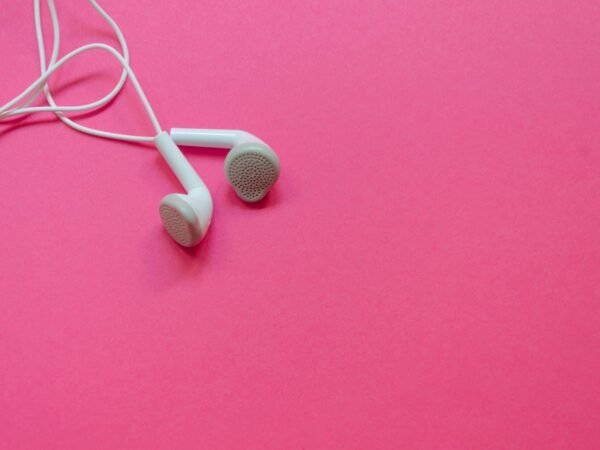Making a daily podcast playlist is a great way to spend your commute, workout, or even just unwind at the end of the day.
In this post, we’ll take you through the simple steps required to create your own personalized playlist for any situation.
1. Choose a podcast app like Pocket Casts.
Choose an app that works best for you.
The one we use is Pocket Casts (iOS/Android), as it’s free, easy to use, and has a great interface.
It also has a built-in directory of podcasts, so there’s no need to go hunting down new ones.
If you want some other options, check out Stitcher Radio (iOS/Android), which uses an algorithm that learns from your listening history so it can recommend episodes that are similar to what you’ve already listened to; or Overcast (iOS), which was created by Marco Arment—the developer behind Instapaper and Tumblr—and has built-in Smart Speed technology for cutting out dead air between sentences during playback.”
2. Create four categories for your playlist: News, Comedy, Education, and Tech.
Now that you’ve got some ideas, it’s time to start sorting them into categories. Create four categories for your playlist: News, Comedy, Education, and Tech.
Your categories should be relevant to your interests and the content you create.
Don’t worry about how many categories you have—just make sure that each category has at least four or five playlists in it (more on why this is important in a moment).
3. Include one episode for each category.
Now you have to choose one episode for each category.
This is the most important part of your playlist, so take the time to really think about which episodes are most relevant and meaningful to you.
The number of categories in your playlist will depend on how long it is and what types of content you want to include.
You can have anywhere from five to ten episodes in a daily playlist, but I recommend six or seven at most if you’re just starting out with this type of project.
Once you feel more comfortable with creating playlists, then feel free to add more categories as needed!
When choosing which episodes go into each category, consider both their relevance (how much does this episode mean or relate to me?) as well as their quality (is this a good episode?).
Some podcasts might not be appropriate for certain age groups—or they might be too difficult for beginners who are still learning English—so make sure that all the episodes included fit within those parameters!
4. Select an episode from the list of recommended content in each category.
The app will show you a list of episodes that are popular with other users or have been rated highly by users.
You can also search for specific episodes (e.g., “podcast”, “new” or “world”) using the search box at the top right corner of the screen, or you can use voice commands if your device supports it (Android only).
5. Organize the episodes by length, from shortest to longest
Now that you’ve got your list of episodes organized by category, it’s time to sort them again—this time by length.
You can do this manually or through a spreadsheet program like Excel or Google Docs (if you’re using a Mac).
I suggest doing it manually so that you have more control over exactly how many episodes are in each playlist and where they go.
For each playlist, I recommend organizing your episodes into three categories: shorter ones for walks, longer ones for dinner or relaxing times at home while watching TV/films/etc., and another set of longer episodes that can be used as background noise while working on projects around the house or writing articles like this one!
When sorting by length, try not to include any single-episode podcasts unless they’re very short ones (under 15 minutes) and already part of an existing “season” series for that podcast (see point 5 below).
This will make it easier for users who don’t want long podcasts cluttering up their feeds—and if someone wants a full season from one particular podcast at once then there are always bingeing options available elsewhere online!
6. Listen to one episode while going to work in the morning.
Podcasts are a great way to kill time when you’re stuck at the bus stop or on your commute.
If you tend to take public transportation, listen with headphones and enjoy some quiet time before heading into a busy day at work (or school).
For those who drive, pick up a podcast as soon as you get behind the wheel and use it as an excuse not to talk on your phone while driving.
7. Listen to another episode while walking to lunch in the afternoon.
If you’re feeling especially motivated, listen to a podcast while walking to work or the gym.
If you have time on your hands and are up for it, listen to a podcast while walking around your neighborhood (or anywhere else).
The key here is that you are trying something new during this step and pushing yourself out of your comfort zone by doing so.
8. Save the longest episodes for dinner or relaxing times at home.
It’s a good idea to save the longer episodes for times when you can really listen in.
For example, if you’re planning on taking a walk or going for a run, those are great times to listen to longer episodes.
It’s also nice to have an episode that lasts for an hour or more ready if you’re relaxing at home after work.
As far as commuting goes, there are generally two types of podcasts: short and long-form (and sometimes there are medium-length podcasts).
If your commute is under 30 minutes each way, then shorter podcasts work best because they’ll keep your attention without being too much of a time commitment.
However, if your commute is over 30 minutes each way, longer-form shows may work better since they’ll be able to go into greater detail than their shorter counterparts can afford.
9. Use a podcast app that continues playing episodes on shuffle mode.
The best podcast apps for listening to daily episodes have features that make it easier for you to listen to podcasts at any time.
For example, the app should have a shuffle feature that you can use when you’re busy with other things.
It should also continue playing episodes on shuffle mode so your playlist is always fresh and ready for you at night.
Finally, the app should have a sleep timer option so it can stop playing automatically when it’s time for bed (or whenever).
We recommend looking for an app that offers these features:
- A search function so you can quickly find the information you need or discover new shows
- A wide selection of podcasts in different categories and genres
10. Power up before starting your daily playlist.
If possible, start your day with a podcast.
Listening to a podcast before you begin your routine can get you in the right mindset for the day and help you be more productive.
It can also help you feel more positive about the day ahead and energized enough to complete your tasks without feeling overwhelmed.
If it doesn’t fit into your schedule, consider tuning in while you’re commuting or cooking dinner—it’ll still count as part of this step!
Conclusion
Don’t get overwhelmed! In order to create a daily podcast playlist, all you need is some free time and your favorite podcast app.
If you’re looking for more tips on how to improve your listening experience, check out our other blog posts about podcasts:















